Pamukkale, meaning “Cotton Castle” in Turkish, is one of Turkey’s most stunning natural and historical wonders. In the Denizli Province of southwestern Turkey, Pamukkale is renowned for its dazzling white travertine terraces, thermal springs, and the ancient city of Hierapolis. This guide will help you explore the beauty and history of Pamukkale, ensuring a memorable visit to this UNESCO World Heritage Site.
1. What is Pamukkale?
Pamukkale is a unique geological formation created by the cascading mineral-rich thermal waters from the Pamukkale travertine terraces. These terraces have formed over thousands of years as calcium carbonate deposits build up, creating a series of white, flat terraces and pools that shimmer under the Turkish sun. The area is not only a natural marvel but also a significant archaeological site, housing the ruins of the ancient city of Hierapolis.
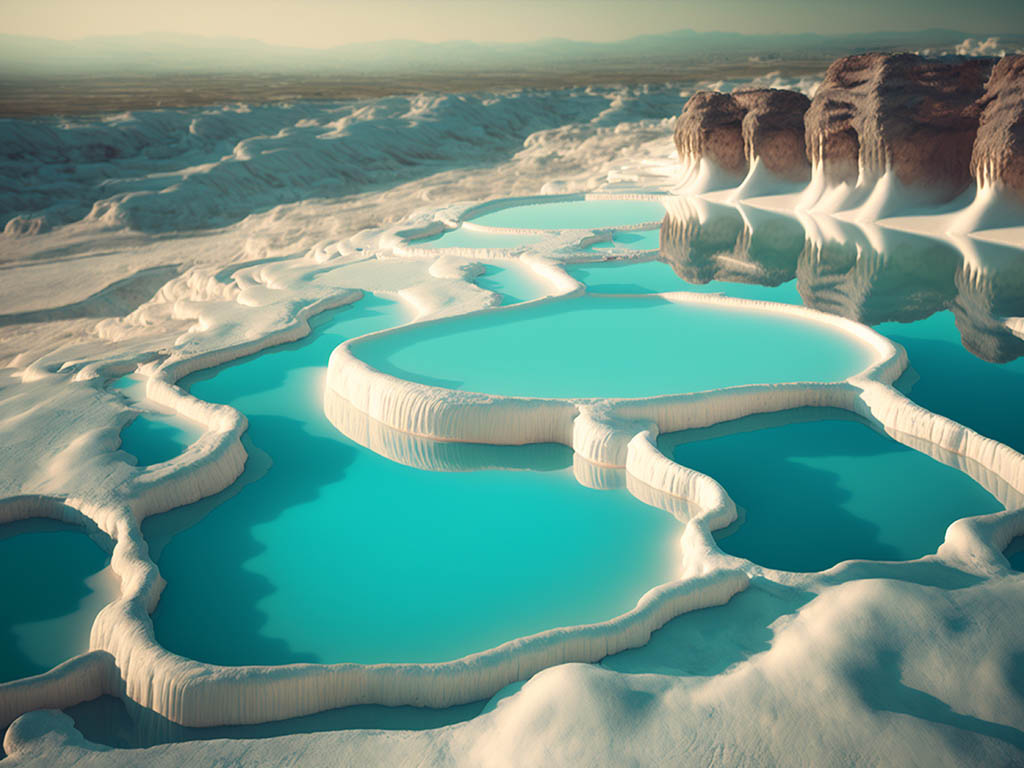
2. Key Attractions in Pamukkale
a. Travertine Terraces
- Description: The travertine terraces are the star attraction of Pamukkale. These gleaming white limestone formations cascade down the mountainside, creating a surreal landscape.
- Activities:
- Walking on the Terraces: Stroll along the terraces, taking in the breathtaking views and the unique mineral formations.
- Photography: Capture stunning photos, especially during sunrise and sunset when the terraces are bathed in golden light.
- Tips:
- Wear comfortable, non-slip shoes as the terraces can be slippery.
- Visit early in the morning to avoid crowds and enjoy a more peaceful experience.
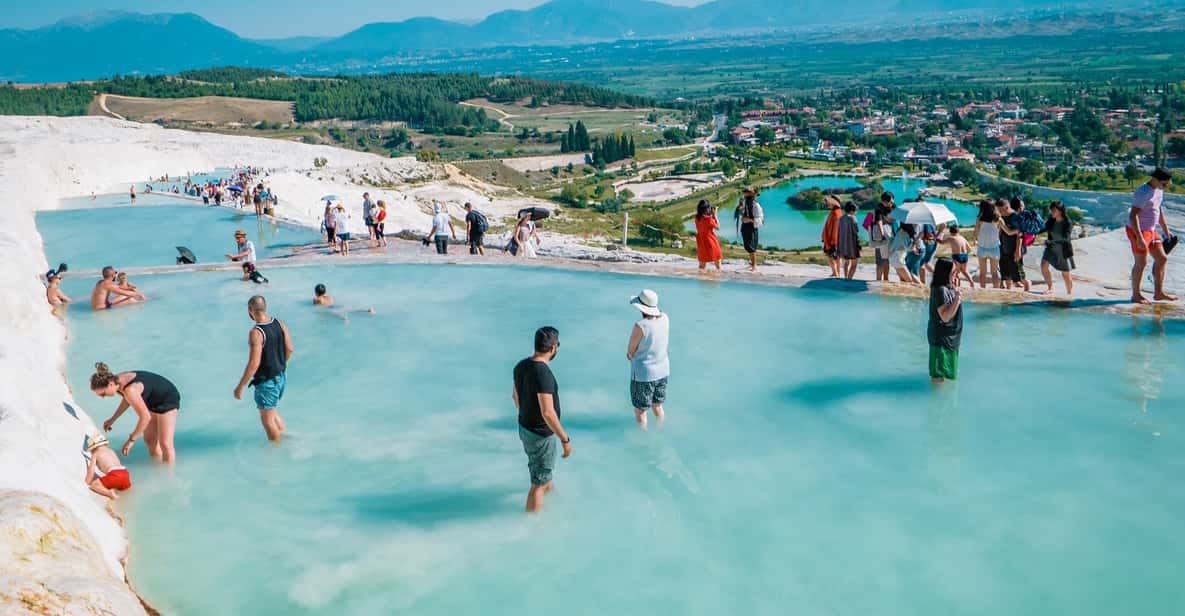
b. Cleopatra Pool (Antique Pool)
- Description: Legend has it that Cleopatra herself swam in these thermal waters. The pool is filled with submerged ancient columns, creating an enchanting setting.
- Activities:
- Swimming: Enjoy a dip in the warm, mineral-rich waters, which are believed to have healing properties.
- Snorkeling: Explore the submerged columns and enjoy the unique underwater scenery.
- Tips:
- Wear appropriate swimwear as the pool is a designated bathing area.
- Bring a towel and change of clothes for added comfort.
.jpg)
c. Hierapolis Ancient City
- Description: Founded in the 2nd century BC, Hierapolis was a prosperous Greco-Roman city renowned for its thermal baths, theaters, and necropolis.
- Key Highlights:
- Theatre of Hierapolis: One of the largest ancient theaters in the world, capable of seating up to 12,000 spectators. It is still used for performances today.
- Temple of Apollo: Dedicated to the Greek god Apollo, this temple showcases impressive columns and architectural design.
- Necropolis: Explore the vast ancient cemetery, which includes tombs, sarcophagi, and stelae dating back to different historical periods.
- Plutonium: An ancient site believed to be the entrance to the underworld, marked by a stone slab with mysterious inscriptions.
- Tips:
- Allocate at least half a day to explore Hierapolis thoroughly.
- Hire a local guide or join a guided tour to gain deeper insights into the history and significance of the ruins.
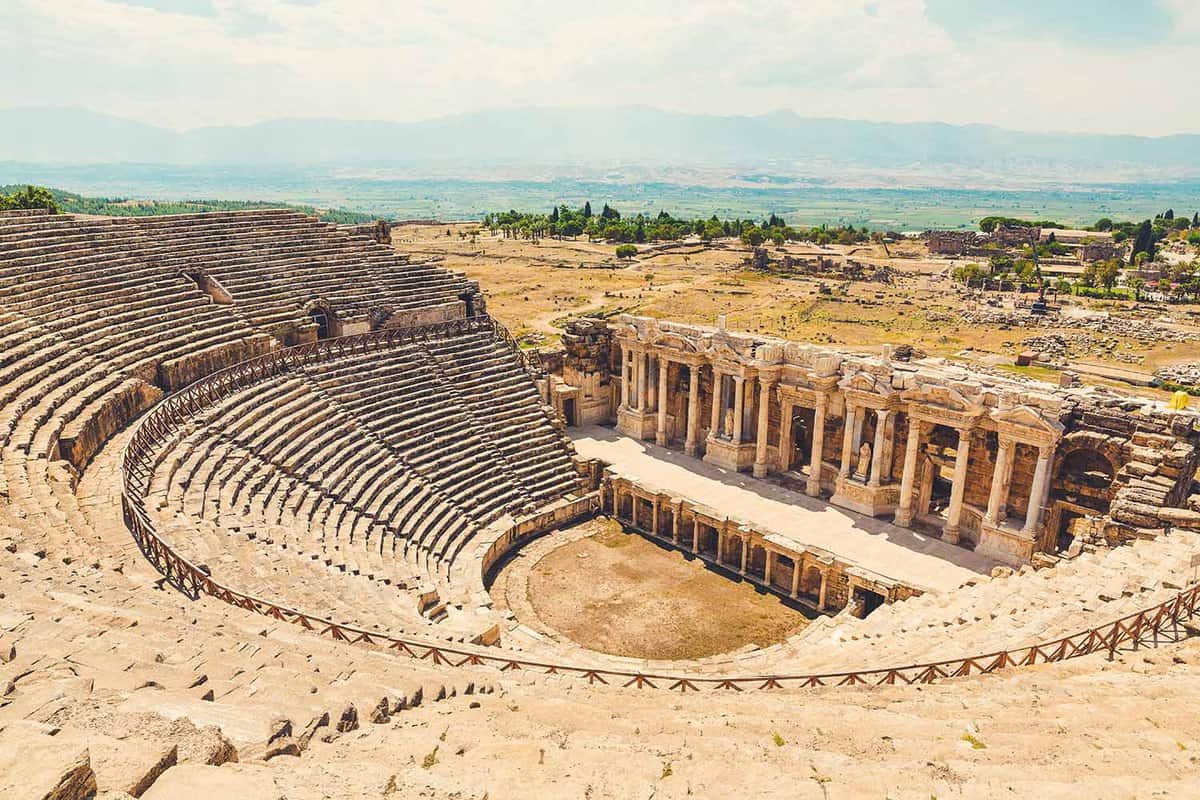
d. Pamukkale Museum
- Description: The museum houses artifacts unearthed from Hierapolis and other nearby archaeological sites, providing a comprehensive understanding of the region’s history.
- Highlights:
- Sarcophagi: Intricately carved stone coffins from different eras.
- Statues and Steles: Pieces depicting deities, mythical creatures, and historical figures.
- Tools and Pottery: Everyday items used by ancient inhabitants, offering a glimpse into their daily lives.
- Tips:
- Visit the museum early to avoid the afternoon heat.
- Combine your museum visit with a tour of Hierapolis for a full historical experience.
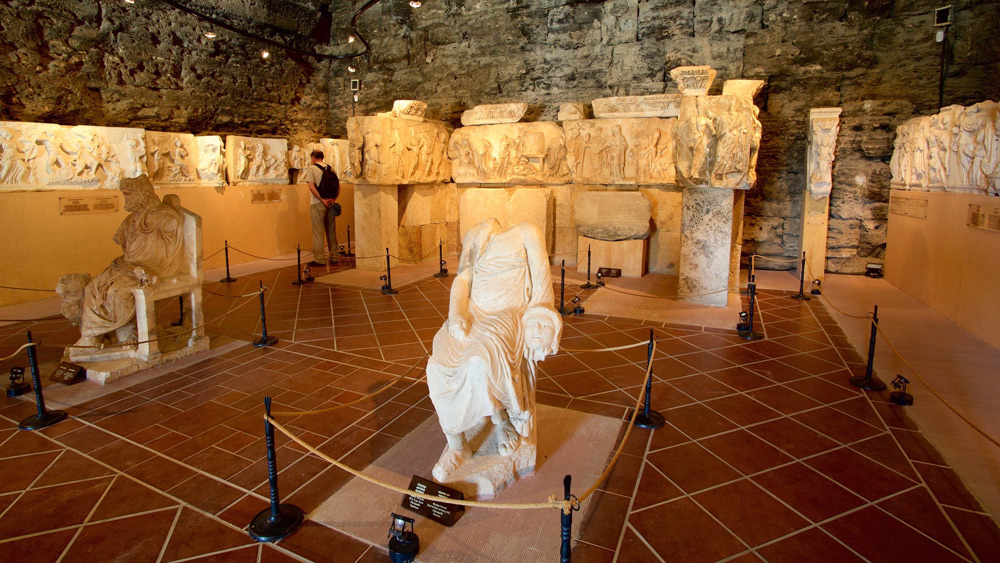
e. Kaklık Cave
- Description: A short drive from Pamukkale, Kaklık Cave is a sacred site with ancient rock-cut churches and unique stalactite and stalagmite formations.
- Activities:
- Exploration: Wander through the cave, discovering hidden chambers and ancient frescoes.
- Photography: Capture the natural beauty and historical elements of the cave.
- Tips:
- Bring a flashlight or use your phone’s flashlight for better visibility inside the cave.
- Wear sturdy footwear as the cave floors can be uneven.
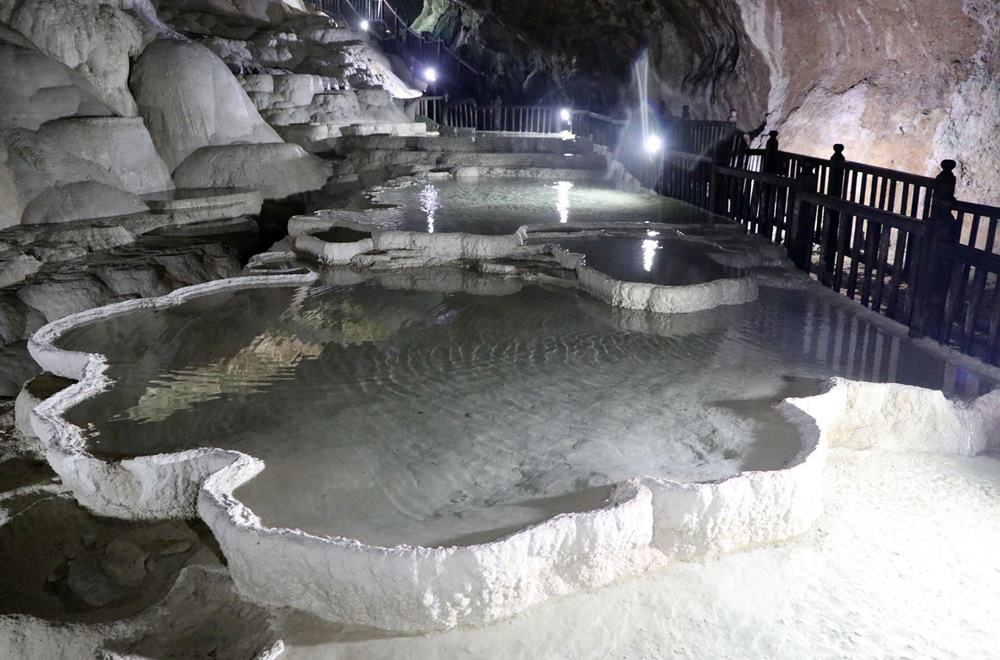
3. Things to Do in Pamukkale
a. Hot Springs and Thermal Baths
Pamukkale’s thermal waters have been revered for their therapeutic properties since ancient times. Enjoy the warm, mineral-rich waters at various locations around the travertine terraces.
b. Hiking and Nature Walks
Explore the surrounding natural beauty through hiking trails that offer panoramic views of the terraces and the surrounding mountains.
c. Shopping for Local Crafts
Visit local shops to purchase handmade souvenirs such as pottery, textiles, and traditional Turkish products.
d. Dining and Local Cuisine
Savor traditional Turkish dishes at nearby restaurants. Don’t miss trying gözleme (Turkish flatbread), kebabs, and local desserts like baklava.
4. Best Time to Visit Pamukkale
a. Spring (April to June)
- Weather: Pleasant temperatures and blooming landscapes.
- Advantages: Ideal for outdoor activities and sightseeing without the summer crowds.
b. Autumn (September to November)
- Weather: Mild and comfortable, perfect for exploring the terraces and ancient sites.
- Advantages: Fewer tourists than peak summer months, allowing for a more relaxed visit.
c. Summer (July to August)
- Weather: Hot and sunny, ideal for swimming in the thermal pools.
- Advantages: Longer daylight hours for extended sightseeing.
- Disadvantages: Higher tourist numbers and hotter temperatures, which may be uncomfortable for some visitors.
d. Winter (December to March)
- Weather: Cooler temperatures with occasional rain or snow.
- Advantages: Very few tourists, offering a peaceful experience.
- Disadvantages: Some attractions may have limited access, and the weather can be unpredictable.
5. Practical Tips for Visiting Pamukkale
a. Getting There
- By Air: The nearest airports are Denizli Çardak Airport (DNZ) and Dalaman Airport (DLM). From the airport, you can take a shuttle, or taxi, or rent a car to reach Pamukkale.
- By Bus: Regular bus services operate from major cities like Istanbul, Ankara, and Izmir to Denizli, from where you can take a local bus or taxi to Pamukkale.
b. Accommodation
Pamukkale offers a range of accommodations, from budget hotels and guesthouses to luxury resorts. Staying in Denizli or the town of Pamukkale itself provides easy access to the terraces and Hierapolis.

c. Entrance Fees
- Travertine Terraces: A small fee is required to enter the travertine terraces.
- Hierapolis: Separate tickets are needed for the ancient city, with additional fees for the Sanctuary of Apollo and the Terrace Houses.
- Cleopatra Pool: An additional fee applies for swimming in the Antique Pool.
- Museum: Entrance to the Pamukkale Museum is included with your visit to Hierapolis.
d. What to Bring
- Comfortable Footwear: Essential for walking on the terraces and exploring the ancient ruins.
- Swimwear: If you plan to swim in the thermal pools.
- Sun Protection: Sunscreen, hats, and sunglasses to protect against the strong sun.
- Water and Snacks: Stay hydrated and energized during your explorations.
- Camera: To capture the stunning landscapes and historical sites.
e. Respect the Environment
Pamukkale is a fragile ecosystem. Follow all guidelines to preserve the travertine terraces, such as not stepping on the white terraces to prevent erosion and preserve the cleanliness of the area.
6. Nearby Attractions
a. Laodicea on the Lycian Way
- Description: An ancient city located near Denizli, known for its impressive ruins and historical significance.
- Activities: Explore the ancient theater, stadium, and temples.
b. Denizli City
- Highlights: Explore the local markets, taste regional cuisine, and visit the Atatürk Museum.
- Activities: Enjoy shopping, dining, and experiencing local culture.
c. Kaklık Cave
- Description: A sacred site with ancient rock-cut churches and natural cave formations.
- Activities: Guided tours through the cave and exploration of historical artifacts.
Conclusion
Pamukkale is a must-visit destination in Turkey, offering a unique combination of natural beauty and ancient history. Whether you’re marveling at the shimmering travertine terraces, soaking in thermal pools, or exploring the ruins of Hierapolis, Pamukkale provides an unforgettable experience for every traveler. Plan your visit during the ideal seasons, prepare with the right gear, and immerse yourself in the enchanting allure of the Cotton Castle.
Happy travels and enjoy your discovery of Pamukkale!
